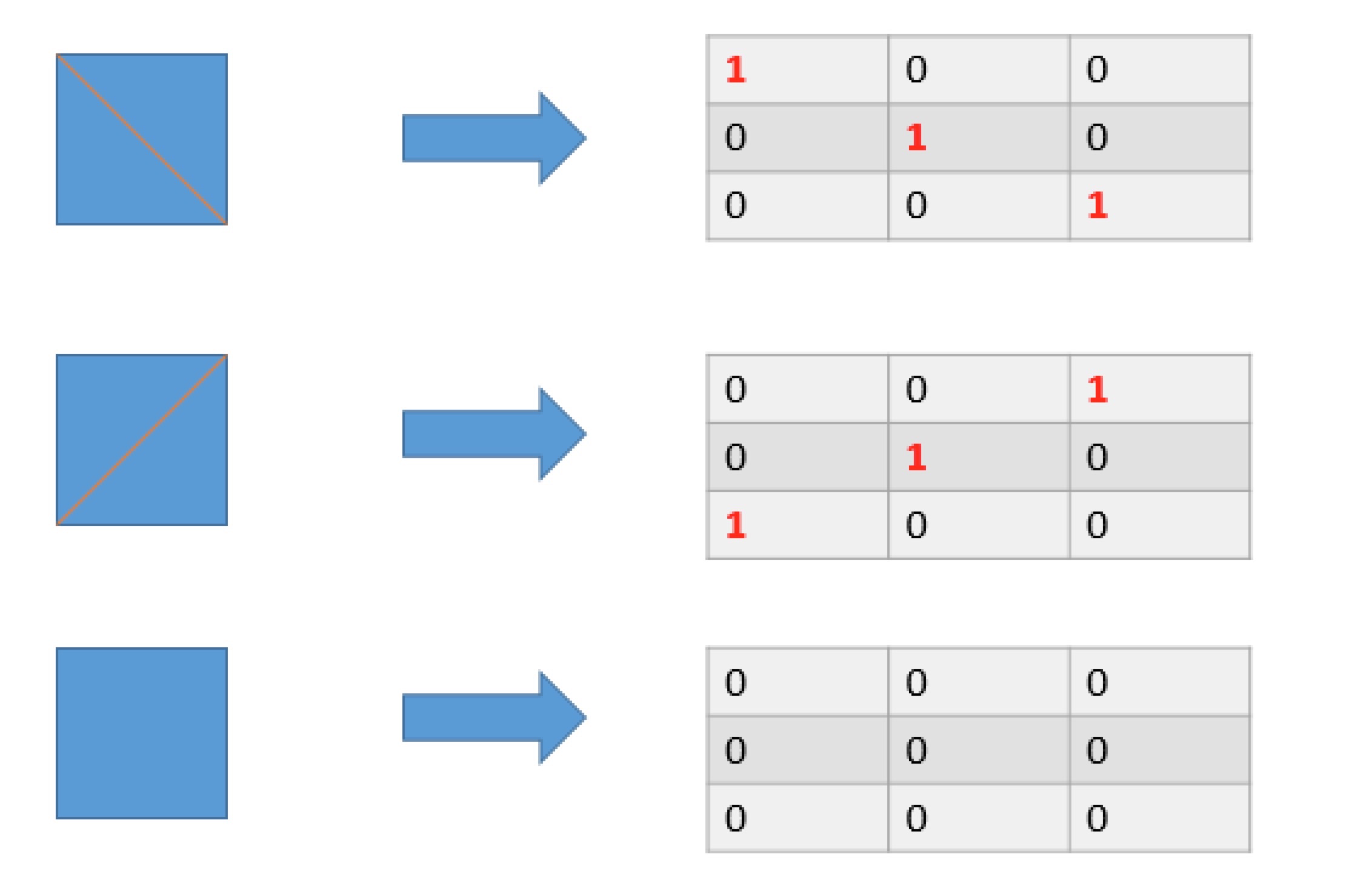题目如下:
In a N x N
gridcomposed of 1 x 1 squares, each 1 x 1 square consists of a/,\, or blank space. These characters divide the square into contiguous regions.(Note that backslash characters are escaped, so a
\is represented as"\\".)Return the number of regions.
Example 1:
Input: [ " /", "/ " ] Output: 2 Explanation: The 2x2 grid is as follows:
Example 2:
Input: [ " /", " " ] Output: 1 Explanation: The 2x2 grid is as follows:
Example 3:
Input: [ "\\/", "/\\" ] Output: 4 Explanation: (Recall that because \ characters are escaped, "\\/" refers to \/, and "/\\" refers to /\.) The 2x2 grid is as follows:
Example 4:
Input: [ "/\\", "\\/" ] Output: 5 Explanation: (Recall that because \ characters are escaped, "/\\" refers to /\, and "\\/" refers to \/.) The 2x2 grid is as follows:
Example 5:
Input: [ "//", "/ " ] Output: 3 Explanation: The 2x2 grid is as follows:
Note:
1 <= grid.length == grid[0].length <= 30grid[i][j]is either'/','\', or' '.
解题思路:“小样,你以为穿个马甲我就不认识你了”。如下图,每个square有以下三种状态,同时给这三种状态定义如何转换成3*3的矩阵,在矩阵中,连续的1表示斜杠。如果把grid中所有的square都进行矩阵转换,那么得到的将是一个由0和1组成的 3*len(grid) * 3*len(grid)的矩阵,这个题目就变成了 求岛的数量 的题目。接下来就是DFS/BFS能做的事了。

代码如下:
class Solution(object): def regionsBySlashes(self, grid): """ :type grid: List[str] :rtype: int """ visit = [] newGrid = [] for i in grid: visit.append([0]*len(i)*3) visit.append([0] * len(i)*3) visit.append([0] * len(i) * 3) newGrid.append([0]*len(i)*3) newGrid.append([0] * len(i)*3) newGrid.append([0] * len(i) * 3) for i in range(len(grid)): for j in range(len(grid[i])): if grid[i][j] == '/': #newGrid[2*i][2*j+1] = newGrid[2*i+1][2*j] = 1 newGrid[3*i][3*j+2] = newGrid[3*i+1][3*j+1] = newGrid[3*i+2][3*j] = 1 elif grid[i][j] == '\\': #newGrid[2*i][2*j] = newGrid[2*i+1][2*j+1] = 1 newGrid[3*i][3*j] = newGrid[3*i + 1][3*j + 1] = newGrid[3*i+2][3*j+2] = 1 direction = [(0,1),(0,-1),(1,0),(-1,0)] res = 0 for i in range(len(newGrid)): for j in range(len(newGrid[i])): if visit[i][j] == 1 or newGrid[i][j] == 1: continue queue = [(i,j)] visit[i][j] = 1 res += 1 while len(queue) > 0: x,y = queue.pop(0) #visit[x][y] = 1 for (x1,y1) in direction: nextX = x + x1 nextY = y + y1 if nextX >= 0 and nextX < len(newGrid) and nextY >= 0 and nextY < len(newGrid)\ and newGrid[nextX][nextY] == 0 and visit[nextX][nextY] == 0: visit[nextX][nextY] = 1 queue.append((nextX,nextY)) return res